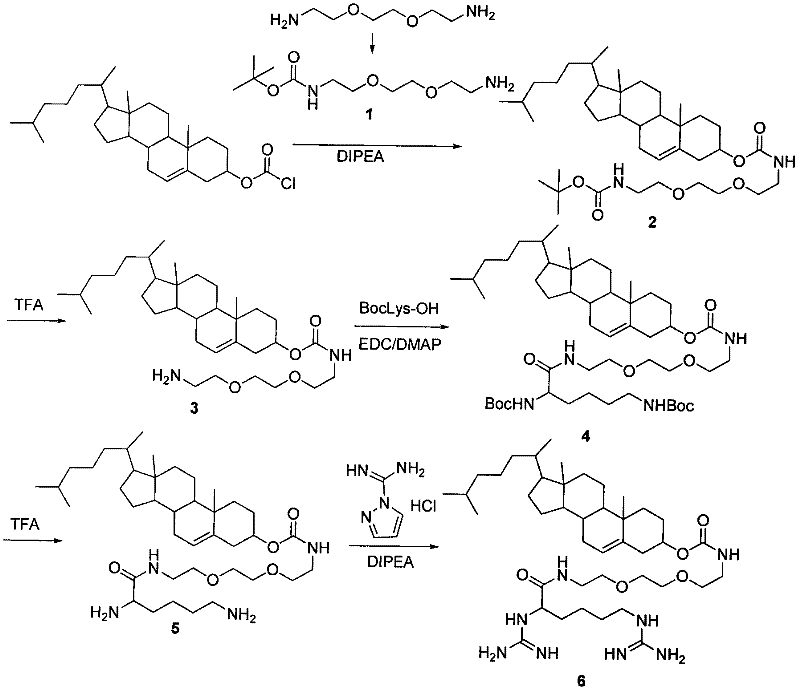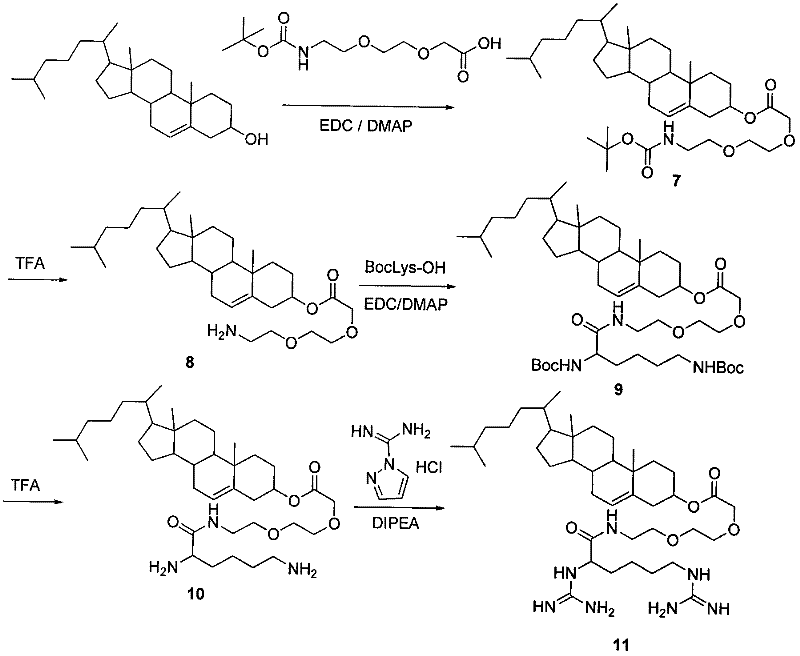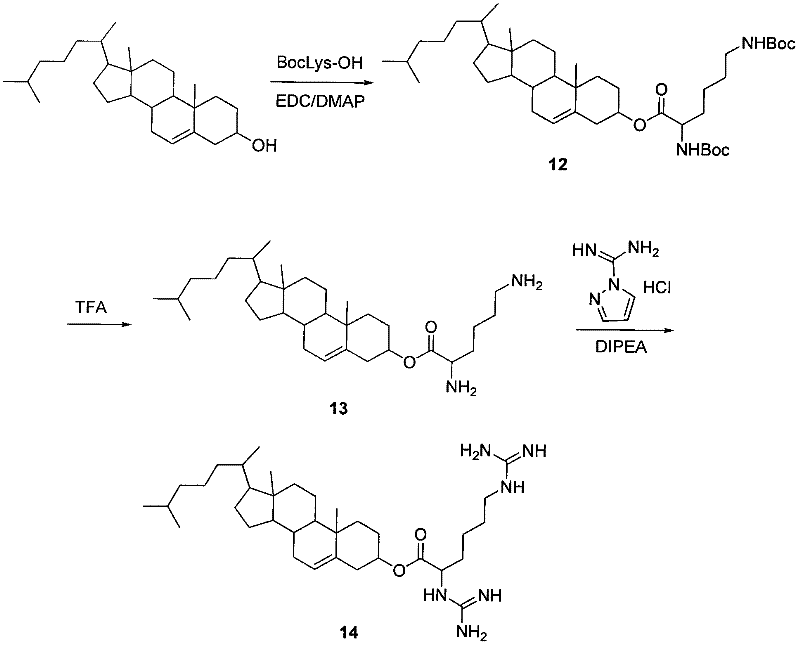Branched cationic lipids for nucleic acids delivery system
A cationic lipid and branched chain technology, which is applied in liposome delivery, organic chemistry, special delivery, etc., can solve the problem of not showing in vivo activity and achieve high transfection efficiency
- Summary
- Abstract
- Description
- Claims
- Application Information
AI Technical Summary
Problems solved by technology
Method used
Image
Examples
preparation example Construction
[0284] B. Preparation of Cationic Lipids of Formula (I)
[0285] The method of preparing cationic lipids of formula (I) described herein involves reacting amine-functionalized cholesterol (functionalized cholesterol) with 1H-pyrazole-1-carboxamidine to provide a guanidinium moiety. The amines attached to the cholesterol can be primary and / or secondary and the amines in the 1H-pyrazole-1-carboxamidine can be unsubstituted or substituted.
[0286] figure 1 An illustrative example of the preparation of cholesteryl cationic lipids is shown in . Activated cholesterol carbonate, such as cholesteryl chloroformate, cholesteryl NHS carbonate, or cholesteryl PNP carbonate, is reacted with a nucleophilic amine, followed by deprotection of the Boc group to prepare compound 3 (with a band-encapsulated amine-terminated difunctional linker cholesterol). The blocked amine was further reacted with lysine to prepare cholesterol with branched moieties (compound 4). Compound 5 was prepared by...
Embodiment 1
[0677] Example 1. General NMR methods.
[0678] Unless otherwise stated, using a Varian Mercury 300NMR spectrometer, acquired at 300MHz 1 H NMR spectrum, 13C NMR spectrum was acquired at 75.46 MHz and deuterated chloroform was used as solvent. Chemical shifts (δ) are reported in parts per million (ppm) downfield from tetramethylsilane (TMS).
Embodiment 2
[0679] Example 2. General mRNA downregulation procedures.
[0680] Cells were maintained in complete medium (F-12K or DMEM supplemented with 10% FBS). Each well contains 2.5 x 10 5 A 12-well plate of cells was incubated overnight at 37°C. Use Opti-MEM The cells were washed once and 400 μL Opti-MEM added to each well. The cells were then treated with a solution of nanoparticles encapsulating nucleic acids or a solution of free nucleic acids (naked oligonucleotides) without nanoparticles (as a control). Cells were incubated for 4 hours, then 600 [mu]L of medium was added to each well and incubated for 24 hours. After 24 hours of treatment, intracellular mRNA levels of target genes such as human ErbB3 and housekeeping genes such as GAPDH were measured by RT-qPCR. Expression levels of mRNA were normalized to that of GAPDH.
PUM
| Property | Measurement | Unit |
|---|---|---|
| number average molecular weight | aaaaa | aaaaa |
| molecular weight | aaaaa | aaaaa |
| molecular weight | aaaaa | aaaaa |
Abstract
Description
Claims
Application Information
 Login to View More
Login to View More - R&D
- Intellectual Property
- Life Sciences
- Materials
- Tech Scout
- Unparalleled Data Quality
- Higher Quality Content
- 60% Fewer Hallucinations
Browse by: Latest US Patents, China's latest patents, Technical Efficacy Thesaurus, Application Domain, Technology Topic, Popular Technical Reports.
© 2025 PatSnap. All rights reserved.Legal|Privacy policy|Modern Slavery Act Transparency Statement|Sitemap|About US| Contact US: help@patsnap.com



